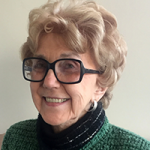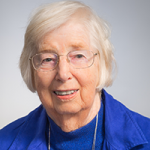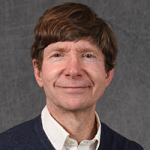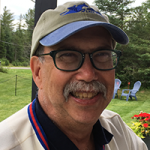Longtime Members Offer Wisdom
Janet Myhre
Member for more than 50 years
Being a mathematical applied statistician has allowed me to have a career in which I am continuously learning, always involved in problem solving, and never bored. My first interest in statistics occurred as a graduate student at the University of Washington. Z. W. Birnbaum was instrumental in founding my interest in probability and mathematical statistics.
One of my careers has been as a professor of mathematics at the Claremont Colleges and University. My teaching involved instructing courses in probability, theoretical and applied statistics, problem solving, data analysis, and statistical thinking for engineers. Other activities included founding the Reed Institute for Applied Statistics. This institute funded summer research for undergraduates and facilitated the process of obtaining funding for courses in applied statistics. In these courses, problems were elicited from government and business, which involved data and could be solved using applied statistics. A course in applied statistics was designed to analyze one of these problems during a semester course. Students received course credit and provided the client with written and oral reports.
My second career, concurrent with my first career and still active, has been as a statistical consultant to the US Navy. This career has been extremely rewarding. The problems to be solved are often complex and require additional theory. The solutions are made possible by teamwork with exceptionally well-informed and dedicated naval officers, engineers, and scientists.
How has your professional and/or personal life been affected by being a member of the ASA?
The ASA has helped my professional life by providing statistical problem solving information both online and in professional meetings. My years as an associate editor of Technometrics and later as chair of the Committee for Careers in Statistics were both informative and rewarding.
Is there anything you wish someone had told you when you embarked upon your career that you would like to tell others now?
One wants to find a career where the work is so enjoyable you never want to stop, where being involved in your work is one of the most rewarding things you do.
Betty Skipper
Member since 1963
I majored in mathematics at Oberlin College, and I was the first in my family to graduate from college.
During my senior year in college, I saw an announcement on a bulletin board about a biostatistics graduate program at Western Reserve University (WRU). A professor from that program came to campus that afternoon to talk to students. I had never heard of biostatistics. It was explained as an opportunity to combine mathematics and science. The coursework consisted of two years of statistics at Iowa State University (ISU) and the first year of medical school at WRU. I applied and received a pre-doctoral fellowship.
As I was finishing my dissertation, a professor at WRU told me he was moving to a new medical school at the University of New Mexico (UNM) and would be hiring biostatisticians. I applied, intending to move back to the Midwest in two years. Forty-eight years later, I retired as a tenured professor from UNM and now work part time. I met my late husband in Albuquerque and have two grown children and four grandchildren.
I have spent my career as an applied biostatistician, collaborating with students and health professional colleagues, as well as teaching biostatistics courses. I am particularly interested in mentoring students and junior faculty and teaching statistical concepts to health professionals who are not statisticians. My combined training in statistics and medical sciences has been an important asset. Over the years, I have seen major changes in statistical practice—from mechanical calculators and computer punch cards to modern computers and statistical software.
Although I didn’t start with specific plans for this career, it has been a rewarding career. I have been privileged to work with many students and faculty colleagues at the University of New Mexico.
How has your professional and/or personal life been affected by being a member of the ASA?
Continuing education through local chapter meetings, publications, and short courses.
What or who inspired you to become a statistician?
There was really no one who inspired me to become a statistician. As I mentioned in the career summary, I saw an announcement on a college bulletin board and decided to apply without really knowing much about it.
Dennis Boos
Member since 1974
How has your professional and/or personal life been affected by being a member of the ASA?
The ASA has been the central professional organization in my career. I have attended most JSMs over the last 40 years. In fact, we often made the JSM a family vacation. (My children loved the hotels when they were young!) I have been involved in a number of committees and have appreciated the organizational professionalism of the ASA. Of course, JASA and TAS have been important journals for me, and I still get hard copies.
What or who inspired you to become a statistician?
In the summer of 1973, I visited the department of statistics at Florida State looking for a career change. My undergraduate degree was in physics, but I had become disillusioned with the heavy dependence of physics on the defense industry for funding. I first talked to a math professor friend about applied math, but he suggested walking down the hall and talking to someone in statistics. (He saw the future!) So, the associate head, Fred Leysieffer, told me about statistics—I had no clue about the field—and I applied to graduate school soon after.
Is there anything you wish someone had told you when you embarked upon your career that you would like to tell others now?
I guess it would have been nice for me to understand the entrepreneurial nature of an academic career. As a junior, I wasn’t proactive enough in making connections with scientists and other statisticians. Fortunately, North Carolina State is a warm and nurturing environment for young faculty.
Calvin Zippin
Member since 1947
In 1947, upon graduation from SUNY-Albany with majors in biology and mathematics and a course in statistics, I was hired by the Sterling-Winthrop Research Institute—the research arm of a large pharmaceutical firm—to do a variety of chores, including statistical analysis of laboratory and clinical data. That same year, I joined the Albany Chapter of the ASA. Three years later, with a full tuition scholarship, I began graduate work in biostatistics at Johns Hopkins under the revered William G. Cochran.
With my ScD degree in hand, I accepted a faculty position in the school of public health at the University of California, Berkeley in 1953 and transferred in 1955 to the school of medicine in San Francisco (UCSF) with appointments in the Cancer Research Institute and the department of preventive medicine. In addition to teaching and research, I served as the campus’ only consulting biostatistician. This resulted in involvement in a great variety of fascinating research areas. I continued to be active with the San Francisco Bay Area Chapter of the ASA.
As head of the UCSF cancer registry and with ties to state and national cancer data systems, my work became focused on the biometry and epidemiology of cancer. Long-term continuing support from the National Cancer Institute fueled my research and led to travel throughout the world and service on national and international committees.
Some of the ways in which I was further rewarded was election to fellowship in the ASA, service as president of the Western North American Region of the Biometric Society, membership in COPSS, and receipt of a lifetime achievement and leadership award from the National Cancer Institute. I am currently professor emeritus of epidemiology in the department of epidemiology and biostatistics at UCSF.
How has your professional and/or personal life been affected by being a member of the ASA?
Attending ASA meetings in the early days brought me in contact with persons with similar and diverse interests within statistics, and subject matter talks helped me try to keep current on developments within the field.
Membership in the ASA provided much of the basic grounding for my career. Rather than cite an individual experience, I will list several that stand out in my memory:
- Four trips to the Soviet Union during the Cold War for an international cancer congress and as part of a US-USSR collaborative project on breast cancer
- Participation in an international World Health Organization meeting on the importance of teaching statistics to medical students held in the unusual location of Karachi, Pakistan
- Meeting with staff of the Atom Bomb Casualty Commission in Hiroshima, Japan, while doing research on late effects of radiation
At the request of the American Association for the Advancement of Science, I interviewed in 1978 in Buenos Aires mothers of missing abductees (some scientists) during the so-called “dirty war” in Argentina.
What or who inspired you to become a statistician?
I credit Lloyd C. Miller, my boss at the Sterling-Winthrop Research Institute, with inspiring me to go into biostatistics. Although he was primarily a pharmacologist, he had worked with Chester Bliss of Yale on bioassay and became aware of the critical importance of statistical methodology in research. He went on to become director of revision of the United States Pharmacopoeia for 20 years. His encouragement led to my going on to graduate work in biostatistics.
Is there anything you wish someone had told you when you embarked upon your career that you would like to tell others now?
For anyone interested in concentrating on an applied area of statistics, I would emphasize the importance of learning as much about the subject matter of that field as well as that of statistics.
I was interested in biology and the health sciences. At the time of my graduate work at Johns Hopkins, we were required to take courses comprising most of the first two years of the medical curriculum in addition to work in biostatistics. For me, this was a blessing.
Also, I would say a career in statistics can open itself to the most exciting and unexpected avenues of fulfillment. Keep your sights high. Expect the unexpected!
Steve Ascher
Member since 1974
I earned my PhD in 1978 from SUNY at Buffalo. My first job was as an assistant professor at Temple University (1978–1983). At Temple, I revived the undergraduate major in statistics, which had been dormant for many years.
In 1983, I decided to go into industry and joined McNeil Pharmaceutical as a statistician. It was there that I learned about the complexities of drug development and how incredibly complex it is to get a new drug on the market. From 1993–1999, I worked at IBRD and Covance (two contract research organizations (CROs)). I received my first managerial experience at both organizations as I headed two small statistics groups.
Working on both the client side and the contractor side gave me a better understanding of how to build beneficial relationships between clients and CROs. I returned to Johnson & Johnson (Janssen) in 2000 to build a phase 4 statistics/programming/data management group.
My CRO experience was helpful, as our business model at Janssen was to use CROs. While at Janssen, my group supported numerous world-wide neuroscience trials. We also assisted in writing posters, abstracts, and manuscripts. In addition, I co-founded a mentoring program for J&J statisticians and programmers. During my J&J tenure, I became involved with the ASA New Jersey Chapter and served as president for four years and vice president for two years. I am currently secretary. We sponsor workshops, webinars, and career days for statistic graduate students and high-school students.
I retired in May of 2016 and still keep active with the ASA New Jersey Chapter and review papers for two veterinary journals and one sports in statistics journal. In addition, I do horse show announcing and keep busy with my sports memorabilia collection.
How has your professional and/or personal life been affected by being a member of the ASA?
Being a member has allowed me to keep up with the latest advances in statistics through subscribing to journals, belonging to various chapters and sections, and attending events for knowledge and networking. I have recommended membership to students and colleagues throughout my career.
Will you share an experience that stands out to you regarding your ASA membership?
What stands out for me is getting more involved in the ASA New Jersey Chapter. I have been president (four years), vice president (two years), and am currently secretary. I have gotten to work with my wonderful and dedicated officers and have always been very appreciative that all of the speakers we have had at various events do this for no financial gain. The volunteer spirit and giving back to the statistics community is alive and thriving! Through the New Jersey Chapter, I have also gotten involved in career days for both statistics graduate students and high-school students. The future of our profession lies with them.
What or who inspired you to become a statistician?
I was good at math growing up and, as a baseball fan, wondered how baseball statistics were computed. Whereas many of my friends wanted to be doctors, lawyers, etc., I wanted to be the statistician for the New York Mets. When I started my undergraduate studies at SUNY at Buffalo in 1970, I was a math major. A friend thought I might like to take a statistics course as a way to apply math. I did and earned my BA in math/stat in 1974, my MS in statistics in 1976, and my PhD in statistics in 1978—all from SUNY at Buffalo.
Is there anything you wish someone had told you when you embarked upon your career that you would like to tell others now?
The importance of written and oral communications. I stress this when I give presentations at career days. Today, communications all too often are in tweets, emails, Instagram, etc., where people “talk” in shorthand (e.g., LOL, UR, etc.). The art of face-to-face communication seems to be fading. As I learned during my career, one needs to be able to present findings to people in a clear and concise manner. Statisticians do not just compute p-values!






















